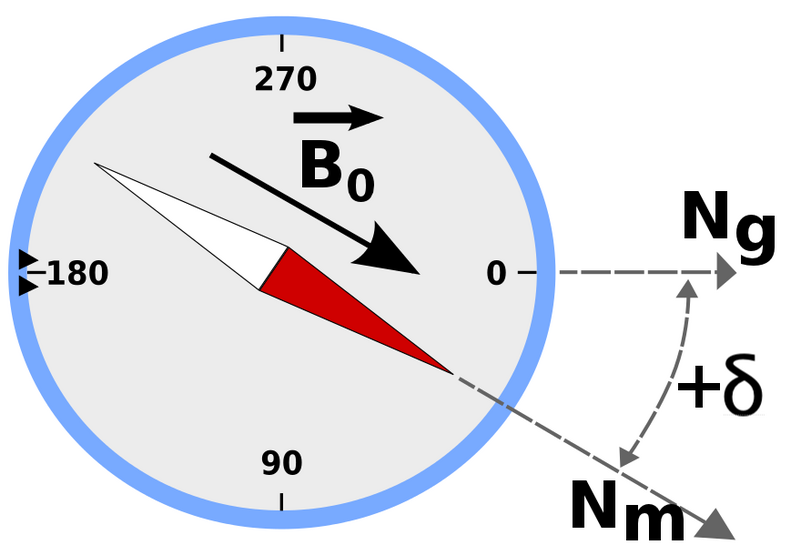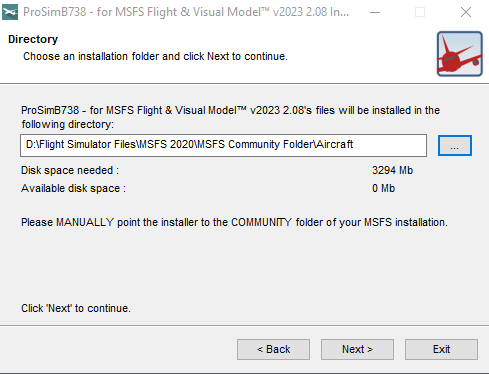Separating Audio To Different Speakers - Sim Avionics & ProSim 737
/
Aircraft turbine (https://www.pexels.com/photo/airplane-turbine-40024/)
When I did my PPL some years ago, I had purchased a David Clark headset for use during my flight training. The headset was a wonderful aid to hear ATC and my instructor whilst filtering out the engine noise and other ambient sounds found in a small cockpit of a Cessna 182.
Although it’s not common place to use a pair of David Clark headsets in a B737 (unless a military version), I decided to use the headset to filter out engine noise, ambient noise, and to hear ATC and ATIS announcements a little more clearly.
Using a real headset
Using a real headset with FSX isn’t that complicated if you’re satisfied with the way flight simulator separates audio. It only becomes complicated when you want to attempt to replicate exactly what occurs in real flight deck.
In a real flight deck, all communication and navigation sounds (ADF, DME, markers, etc) can be heard through the headset and /or flight deck speaker. Unfortunately, in FSX the opposite occurs, with navigational sounds being heard through the main speakers only. FSX only separates ATC and ATIS (voice).
So how do we separate audio to hear various sounds through different speakers and the headset.
Separating Audio – Choose Your Poison
There are several methods to achieve audio separation; some methods are easier than others.
You can either utilize what is already available on your computer through FSX. This is the easier and simplest method and works well with my policy of KISS (keep it simple stupid).
If you’re feeling more energetic, and wish to separate sounds to several strategically placed speakers, then a second sound card is probably your only option. With two sound cards on your computer, you can now select which sounds play through which sound card.
If you’re loath to install a second card to the innards of your computer box; then, explore one of the several add on sound cards that can connect to your computer via USB – some cards offer 5:1 surround sound while others offer just a basic sound card interface.
Another method (which I have chosen to follow) is to duplicate sound programs and run them on separate networked computers. High-end flight avionics software such as produced by Project Magenta, Sim Avionics and ProSim737 support this.
The Easy Way with FSX
FSX supports the separation of basic audio. It’s as easy as opening the sound menu in FSX and selecting which sound is played on which device - speakers or headset. Engine sounds will be diverted to the surround speakers and ATC and ATIS will be diverted to the headset. This works very well, however, only ATC and ATIS voice is diverted to the headset. Navigation sounds, call outs, etc are not heard through the headset. To divert these sounds requires a little thinking outside of the box.
I’ve attempted to explain basic audio segregation using two popular flight avionics suites: Sim Avionics and ProSim737.
Using Sim Avionics – Basic Operation
One of the upsides of using Sim Avionics or ProSim 737 is that it allows you to simultaneously operate different facets of the flight deck from multiple computers. In my set-up I am running two computers – one with FSX installed (called the server PC) and one with Sim Avionics installed (called the client PC). Both computers have speakers attached.
To install audio on both computers you will need to copy the sound.exe file and audio folder found in your Sim Avionics main directory to the server PC (computer that has FSX is installed). You will also need to copy the Client_TCP.exe file as this file allows Sim Avionics to communicate between networked computers. Once copied to the server PC, click the executable sound.exe file after you have opened FSX. Sounds will now be heard through speakers on both the client and server PC.
Using Sim Avionics – Separating & Customizing Sound
This is comparatively easy and involves selecting the sounds you do not want to hear and either removing them from the audio folder or renaming them. In the audio folder on the server PC, I have removed most of the sounds and have left in the folder the sounds that I wish to hear only through the headset (navigation aids, TCAS warnings, GWPS warnings & call outs – V1, V2, VR, etc). Therefore, the sound program on the server computer only has those sounds I want to hear through the headset.
On the client PC, to avoid duplication , I have removed the above mentioned sounds from the audio folder. It’s important to edit/remove the sounds from the audio folder that you do not want to hear. Failure to do this will result in duplication of sound. In other words you will hear V1, V2, Vr, etc through your headset and through the main speakers being run from the client computer.
Therefore, what you now have running is:
Server PC – engine sounds being heard through the surround speakers, ATC and ATIS being heard through the headset (via FSX sound separation), and customized sound (navigation, call outs, etc) being heard through the headset (via separately installed Sim Avionics sound program).
Client PC – all other non general sounds being heard through the attached speakers (via separately installed Sim Avionics sound program).
Adding Customized Sound
Adding customized sound can often is challenging. Add the sound file (.wav format) to the audio folder. Then search and find the sound .cfg file. Edit the .cfg file to reflect the added sound and when/how you want the sound to be played.
The easiest method is to duplicate the section relating to sound from an already operating sound. Then edit to reflect the new sound. This way you do not run the chance of making a syntax or topographically error.
I explained how to edit a sound file in my earlier Journal post: Are the Engines Running – 738 Sound.
Using ProSim 737 – Basic Operation
The methodology of manipulating sound in ProSim737 is similar to Sim Avionics.
You copy the ProSim sound program from the server PC to the client PC so each program can send customized sound to separate speakers on each computer. To select which sound you want to hear, open each sound program and select/deselect the appropriate sound from the list.
Adding Customized Sound
If you are wishing to add additional customized sounds to the sound program, you can do this in the configuration section of the ProSim737 main program.
First, you need to add the actual sound to the audio folder. All sounds should be in .wav file format. The sounds are usually kept on the ProSim737 main folder/Audio folder (but can be linked from any folder if you wish). After adding the customized sound, to ensure correct operation, you may need to edit the actual sound file. This file is found in the ProSim 737 main folder/audio. The file you are looking for is named config.xml. Unlike other software, which uses config (.cfg) files, ProSim 737 uses the .xml file format. To edit this .xml file right click the file with your mouse and choose edit. Whenever editing anything, always make a back-up first.
Once the new sound file has been added, you need to link the file within the sound program. To do this, open the file tab in the main Pro Sim 737 program menu and select “add audio”. Follow the prompts to name and link the .wav file. Then, you should be able to see and select the sound file from the Pro Sim sound program. Click the sounds you want to be heard and press “test” to hear your sound.
In ProSim737, as opposed to Sim Avionics, you only enter the sounds once through the main Pro Sim 737 program interface (installed on the server PC). Any installation of the sound program on client computers has access to this main audio folder.
Alternate Methods in ProSim737
ProSim737 also provides alternate ways for customizing sound. This is done through the main ProSim737 main program.
One method involves selecting an internal audio for the added sound in the file/config/audio tab. This triggers the main program to read the sound automatically. Another way to join a sound to a specific task is to use what Pro Sim call a gate. A gate can be used to link the sound to a bespoke sound and generic named action. This method is very easy if your defined sound output is actually named in the pull down menu list.
If the added sound is linked to a button press or specific action, then you can link the sound using FSUIPC or via another device such as an I/O card.
ProSim737’s alternate methods of adding and linking sound appear to be quite convoluted and confusing (at least to me). The ProSim737 manual provides addition information and instructions.
PM Sounds – an easy way to add additional sounds
I have used PM Sounds (PMS) for many years and have enjoyed its simple interface and ability to just work out of the box. PM Sounds is a small, stand-alone add on released by Project Magenta used to supply customized sound to their fleet of products. The program is is compatible with many other avionics suites.
The program is stand alone and does not load into the file structure of the simulation platform. To hear sounds from each computer on your networked set-up requires that PMS be installed on each computer. PM Sounds comes with a large selection of sounds and you can easily select which sound you require by checking or not checking the box and pushing Q on the keyboard to save the selection. Activation of the sounds is achieved by running PM Sounds before you start FSX. The rest just works…
Adding Customized Sound to PM Sounds
To add customized sound to PM Sounds, it’s a matter of finding the audio folder (located under PM Sounds/) and adding the sound (in .wav format). To hear the sound within PM Sounds, you then must edit the sound.cfg to reflect the sound name, file name and location.
To use PM Sounds on any computer other than the computer running FSX requires you have a copy of Wide FS as PM Sounds uses this program to communicate between the server computer and the clients.
PM Sounds can be used in addition to whatever sound program you are using. The program can be found on the Project Magenta website.
Important Point To Know (Gauge Commands)
Several sound designers configure their custom sounds to play only when specific actions or commands are triggered - these are called gauge commands. A sound initiated by a gauge command only works when that gauge is moved by whatever action. Often it's not possible to use these sounds without some major editing work to the sound.cfg file. For example, I've been attempting to use the speedbrake sound in ProSim, but as yet have not been able to do so. This is because the speedbrake is configured to a specific "in house" command or action - in this case the speedbrake.
You cannot just grab any sound, copy it to the audio folder, and then expect it to play. There has to be some logic to when the sound is played. This can be most challenging and frustrating part of manipulating custom sounds.
There You Have It…
Sound can be as easy or as complicated as you want it to me.
I have attempted to provide, within the last two journal posts, an incite into audio separation using Sim Avionics and ProSim737. Certainly, the process described above has worked relatively well in my simulation set-up. Your configuration may differ to what I have, but what will not alter is the basic method of audio segregation.

















































